The following Congress Diary is by Anders Cato (Slots- og Kulturstyrelsen/Danish Agency for Culture and Palaces). English follows the Danish text.
IAML 2017 Riga Letland
Den 18. til 22. juni i år deltog jeg i IAMLs årlige kongres i Riga, Letland. Dette fik jeg mulighed for at gøre fordi, at jeg fik hjælp af DMBF med et stipendium, der dækkede registreringsgebyret, hvilket jeg er meget taknemmelig for. Jeg var så heldig, at jeg fandt et rigtigt billigt fly og også en billig lejlighed midt i byen i Riga som jeg bookede for en hel uge. Jeg valgte derfor, at tage af sted allerede om fredagen den 16. juni og tog først hjem igen til Skt. Hans Aften den 23:e.
Som mange måske ved, så arbejder jeg i Slots- og Kulturstyrelsen (SLKS) som Bibliografisk konsulent og det har jeg nu gjort i de seneste 3 år. Oprindelig er jeg svensker og har arbejdet forskellige steder i Sverige, som musikkatalogisator i BTJ i Lund i ca. 12 år, men også i 10 år på Kungl. biblioteket i Stockholm, først som chef for Nationalbibliografien og senere som Katalogiseringschef. Jeg har været medlem af den svenske musikbiblioteksforening (SMBF) siden 1988 og det er jeg stadig. I 1990-erne var jeg meget engageret i IAML og den gang var jeg mest aktiv i Cataloguing Commission. Jeg var både formand og sekretær gennem årene. Da jeg begyndte at arbejde i Danmark, blev jeg igen engageret i den samme kommission, som nu hedder Cataloguing and Metadata Section og her har jeg nu været sekretær i 3 år i perioden 2014 til 2017. Her i Danmark er jeg selvfølgelig også medlem i DMBF!
På grund af mine interesser var mit fokus under IAML i Riga også katalogiserings- og metadataspørgsmål og selvfølgelig var jeg med til alle møderne i min egen sektion.
Den 16. juni tog jeg så afsted kl. 9 om morgenen med Norwegian til Riga. Det er en kort flyvetur på kun lidt over en time. I Riga blev jeg hentet i lufthavnen af dem, som jeg havde lejet lejligheden af og kl. 11 var jeg allerede installeret på lejemålet. Fredag eftermiddag og hele lørdagen tilbragte jeg med at gå rundt at kigge på byen, en dejlig lille by med rigtigt mange gamle huse og bygninger der var pænt bevaret. Dele af byen er næsten helt i Jugendstil og det var en ren fornøjelse at gå omkring i de dele.
Om lørdag eftermiddag var jeg til en orgelkoncert i domkirken og jeg besøgte også Domkirkemuseet. Overalt i byen hørte man korstemmer den eftermiddag, mandskorstemmer, og jeg opdagede senere, at det var herrer der cyklede rundt på sk. partybikes og sang og drak øl overalt. Til min forfærdelse opdagede jeg at mange af dem var berusede svenskere…
Søndagen bød på en precongress tour til Rundale Slot ca. 70 km syd for Riga. Det er Letlands største barokpalads bygget i 1700-talet som sommerresidens for hertugen af Kurland, Ernst Johann von Biron. Arkitekt til paladset var den berømte Bartolomeo Rastrelli, som også er berømt for Vinterpaladset i S:t Petersborg. Vi fik en rigtigt fin guidet tour gennem slottet og vi fik også lidt tid til at gå rundt i slotshaven efter turen. Til sidst var der fællesspisning i slottets café. Efter udflugten nåede vi lige hjem, så vi kunne deltage i aftenens åbningsceremoni, der fandt sted i det smukke Nationalbibliotek.
Hele konferencen fandt sted på Nationalbiblioteket. Nationalbiblioteket er en helt ny og meget imponerende bygning: Gaismas Pils, eller Lysslottet som det betyder på dansk. Biblioteket er tegnet af den lettiskfødte arkitekt Gunnar Birkerts og åbnede i 2014. Bygningen er på 40.000 kvadratmeter og har 13 etager. De to øverste etager har en vidunderlig udsigt over hele byen.
Det er svært at komme ind på, hvad jeg oplevede som mest interessant under kongressen. Det man mærker tydeligst er al den tale om digitalisering. Det er ikke kun som tidligere, at man kun taler om digitalisering af kataloger. Nu er det digitalisering af alt, bøger, trykte noder, indspillet materiale, hvordan laver vi det synligt som ikke de kommercielle tjenester laver synligt? Alt er ikke på Spotify, YouTube mv. Vi vil have det synligt, søgbart, gratis, let tilgængeligt! Der var oplæg som ”Digital tools for research and access”, ”Metadata: the greatest barrier to digital services in the music library?, “Digitisation projects: Mozart, Bach and contemporaries” og meget mere.
Jeg deltog selvfølgelig i alle møder der blev afholdt af Cataloguing og Metadata Section og der var tre business meetings plus en sk. open session. En stor del af vores business meetings blev tilegnet en lang diskussion om hvordan vi linker forskellige term-vokabularer sammen. Vi koncentrerede os især om, at få vores vokabularer indenfor IAML mere kompatible med dem fra Library of Congress, som bruges i store dele af den angloamerikanske verden. IAML har en database der vedligeholdes af frivillige indenfor organisationen, men i de senere år har det vist sig at være svært, at finde tilstrækkelig med interesserede personer. I vores nye verden med linket data, der holder styr på hele internettet, er det blevet utrolig vigtigt, at de termer vi bruger er konsekvente og at de viser nøje om en term er eksakt tilsvarende eller kun ”lignende”. Måske virker det lidt kedeligt for mange af dem der læser denne rapport, men for os der arbejder meget med det, bliver det rigtigt spændende – og ikke mindst sjovt, når det bliver virkeligt. Der blev under møderne præsenteret to interessante projekter fra Europa:
- Den finske thesaurus SEKO (Terms of medium of performance)
- Den tyske: Liste der normierten Besetzungsangaben
Linket data kan ses som en mulig efterfølger til den gamle bibliografiske verden med MARC-poster og i den forbindelse holdte Joseph Hafner, formand for Cataloguing and Metadata Section, et oplæg om et meget interessant linket data projekt mellem forskellige biblioteker i Canada der forsøger, at skabe et fælles univers med linket data over hele landet, benævnt Canadian Linked Data Initiative. Man vil forsøge at overbevise folk om, hvor vigtigt det er, at arbejde med linket data og skabe disse data på en måde, så at ”linkningen” rigtigt fungerer. Det er ikke altid så enkelt, men når man opnår løsninger, så åbner der sig en helt ny verden. I Canada har det været 5 universitetsbiblioteker i fællesskab med Library and Archives Canada og Bibliothèque et Archives nationales du Québec, der har udarbejdet dette initiativ.
Der var også et oplæg om den nye IFLA Library Reference Model (LRM) som er den model, der tager over efter FRBR som begrebsmodel for det bibliografiske univers. FRBR kom for ca. 20 år siden, i 1998, og har siden været den dominerende model. Efter FRBR kom der også FRAD (Functional Requirements for Authority Data) og FRSAD (Functional Requirements for Subject Authority Data) og disse tre modeller er nu smeltet sammen til én – den som nu har fået navnet IFLA LRM.
Bemærkning: Efter IAML-konferencen var IFLA LRM oppe til afstemning i IFLA og blev hermed vedtaget som ny model for den bibliografiske verden på et møde i IFLA Professional Committee den 18. august. Den fuldstændige model kan findes på: https://www.ifla.org/publications/node/11412.
De nye katalogiseringsregler RDA blev naturligvis drøftet. De nye regler står lige foran en stor modernisering og det selvom, at de er temmelig nye. RDA blev publiceret første gang i 2010 og er efterfølgende begyndt at blive brugt i verden fra 2013. I Danmark er der truffet beslutning om, vi skal begynde at bruge RDA fra foråret 2018. De andre nordiske lande er også ved at skifte. At det lige bliver foråret 2018, hvor Danmark skifter, er afhængig af den omstrukturering som der netop blev orienteret om under konferencen. RDA Toolkit som er RDA’s hjemmeside bliver ændret, så den i fremtiden bliver meget nemmere at bruge. Al opdatering fra tidligere i år og frem til april 2018 er derfor stoppet. Moderniseringsprojektet benævnes ”The 3R Project” hvilket står for: RDA Toolkit Restructure & Redesign. For Danmark bliver det nemmere at vente indtil omstruktureringen er forbi og hermed slipper vi for at lave en masse dobbeltarbejde – både i det gamle og nye system. Nu arbejder vi udelukkende med fokus på det nye. I Europa findes der en European RDA Interest Group (EURIG), hvor jeg har været sekretær i de seneste tre år. Under IAML-kongressen fik jeg også fornøjelsen af at aflevere en mindre rapport fra EURIG. Jeg sidder også som EURIGs repræsentant i en af RDAs arbejdsgrupper, nemlig arbejdsgruppen om musik.
Om mandagen var der andre interessante oplæg om ”Music collections and musical life in the late 19th and early 20th centuries”. Her fandt jeg især et oplæg om Sjostakovitj og hvordan hans værk blev spejlet i den tyske musikpresse før krigen meget interessant – og her kan man se at interessen for moderne russisk musik lige før krigen var meget stor og det var ikke kun Sjostakovitj, men også flere af de andre dalevende russiske komponister som der blev tæt refereret til og hvis musik blev opført. På denne session var der også et interessant oplæg om ”What Were Mnenonites Singing When They Traveled through the Red Gate into Latvia?”. Dette oplæg handlede om de ca. 100.000 mnenoniter, der levede i Rusland i 1920-talet og som risikerede at blive forfulgt af det nye kommunistiske regime. De fik alle et tilbud om at flytte til Canada og det var der mange der gjorde. De rejste til Canada fra Letland og da de kom ind i landet rejste de videre gennem ”The Red Gate” hvor mange gik syngende af glæde gennem portene. De havde en meget lang sangtradition af ikke akkompagneret unison sang, en tradition der udviklede sig til at blive firstemmig i det tidlige 1900-tal. Man brugte ciffernotation og under oplægget fik vi alle lejlighed til at synge ifølge den notering. Vi sang ”Nun danket alle Gott”.
Dette jeg har fortalt var et udpluk af de mest interessante ting, som jeg foretog mig i Riga. Om torsdagen sluttede konferencen, en dag tidligere end hidtil, fordi at man i Letland også holder fri på Skt. Hans (eller midsommer) og tager i sommerhus. Konferencen sluttede med en afskedsreception i Latvian Society House, hvor der var god mad, dans og folkedans for dem, der havde lyst. En perfekt afslutning på en fantastisk uge!
Anders Cato
Slots- og Kulturstyrelsen
IAML 2017 Riga Letland
On the 18th until the 22nd June this year I took part in the annual IAML Congress in Riga, Latvia. I had the possibility to do so thanks to a scholarship that I received from the Danish branch of IAML, DMBF. The scholarship covered the registration fee and I am very grateful for that. I was fortunate enough to find a cheap flight and also an affordable apartment in the city center and I booked it for a full week. Because of this I left for Riga already on Friday the 16th of June, going back home again Friday morning one week later.
My daily work is at the Danish Agency for Culture and Palaces (in Danish “Slots- og Kulturstyrelsen” (SLKS)) as a Senior adviser within the Bibliographic field. I have been there for three years now. Originally I am Swedish however and I have had several various positions in Sweden, as a music cataloguer at the company BTJ in Lund, but also 10 years at the National Library in Stockholm, first as Head of the National Bibliography: Monographs Unit and later as Head of Cataloguing.
I have been a member of the Swedish branch of IAML since I graduated in 1988, and I still am, even if I work in Denmark. In the 1990s I was very much involved in the work of IAML, in those days mainly in the Cataloguing Commission. I was both chair and secretary over the years. When I started working in Denmark I became involved in IAML again, and also started a new period within the same commission, that however now had changed name to Cataloguing and Metadata Section. During the years 2014-2017 I acted as secretary here. As I am now working in Denmark, I am of course now also a member of the Danish branch of IAML.
Due to my specific interests in work life my focus during the IAML Congress in Riga was on cataloguing and metadata issues and of course I took part in all meetings of my own section.
Early in the morning of the 16th of June I left for Riga, a short flight of not much more than an hour from Copenhagen. At Riga airport I was picked up by the people that I was going to rent my apartment from, and already at 11 I was already completely installed J. Friday afternoon and all of Saturday were spent exploring the town of Riga, a very nice little town with many old buildings preserved and nicely renovated. Parts of the town were more or less completely in Art Noveau style and it was such a pleasure walking around there.
Saturday afternoon I went to an organ concert in the Cathedral and I also paid a visit to the museum of the Cathedral. Everywhere in town you could hear choir music, men’s voices, and I discovered later, that it was gentlemen biking around the city on so called “party bikes”, singing and drinking beer non-stop. I was greatly appalled when I discovered that many of them were drunk Swedes….
On Sunday morning a friend asked me if I didn’t want to join him for a pre-congress tour to Rundale Palace, about 70 km south of Riga. Of course I did so! Rundale is the largest baroque palace in Latvia, built in the 18th century as the summer residence of the Duke of Courland, Ernst Johann von Biron. The architect of the Palace was Bartolomeo Rastrelli, also famous for being the man behind the Winter Palace in Saint Petersburg. We had a guided tour in the palace and we also had the chance of a walking tour in the palace gardens after the tour. At the end we had lunch together in the gorgeous cafeteria of the palace. We just made it to get back to Riga in time for the opening ceremony which took place in the beautiful National Library.
The National Library was also the place where the whole congress too place. It is a completely new and very impressive building by the name of Gaismal Pils, or Castle of Light in English. The Library was designed by the Latvian born architect Gunnar Birkerts and opened in 2014. The building is all in all 40.000 square metres and consists of 13 floors. The two floors at the top have an incredibly marvelous view of the city.
It is hard to figure out what I found most interesting during the five congress days. One thing that I clearly noted was all talk about digitization. We have talked about that for many years now, but there is a clear trend of people going from talking about digitization of library catalogues to digitization of all kinds of printed and sound matter: books, printed scores, recorded materials etc. How do we make those materials visible that are not made visible through commercial services? Everything is not on Spotify, YouTube etc. We want it visible, searchable, freely available, easily accessible! There were presentations like ”Digital tools for research and access”, ”Metadata: the greatest barrier to digital services in the music library?, “Digitisation projects: Mozart, Bach and contemporaries” and many more.
The meetings of the Cataloguing and Metadata Section were of course a must for me and within that field we had three business meetings and one open program. There was a lengthy discussion on how to link various term vocabularies together. Great effort was put into the discussion on getting IAML vocabularies compatible with the ones from Library of Congress which are being used in a great part of the Anglo-American cataloguing world. IAML has a data base, maintained by voluntaries within the organization and we need to keep the voluntary work going, however regretfully in the last few years finding voluntaries has been more difficult than before. In this new world, made up by linked date that keeps the internet together, it has become incredibly important that the terms used are being used in a consistent way, and that they show clearly if a term is an exact match, or only a similar match. Maybe this work appears a bit boring to many of you who read this, but for us who work with it a lot, it becomes really exciting, especially when you can see your dreams coming true :)
During the meeting two interesting European projects were presented:
- The Finnish thesaurus SEKO (Terms of medium of performance)
- And a German equivalent: Liste der normierten Besetzungsangaben
Linked Data can be seen as a successor to the old bibliographic world of MARC records and in connection with this the Chair of the Cataloguing and Metadata Section, Joseph Hafner made a presentation on a very interesting linked data project between various libraries and others in Canada that are trying to create a common “universe” with linked data all across the country, named the Canadian Linked Data Initiative.
The project aims at showing people how important the work with linked data is, and to also of the importance of creating these data in a way so that linking really works. It is not always that easy, but when you find solutions to the problems there is a new world opening up. In Canada this initiative was the result of cooperation between five university libraries together with Library and Archives Canada and the Bibliothèque et Archives nationales du Québec.
There was also a presentation of the new IFLA Library Reference Model (LRM) which is the model, that will take over after FRBR as the conceptual model for the bibliographic universe. FRBR came almost 20 years ago, in 1998, and has been the predominant model for bibliographic work ever since. Besides FRBR also other conceptual models for other parts of the bibliographic universe have been developed, such as: FRAD (Functional Requirements for Authority Data) and FRSAD (Functional Requirements for Subject Authority Data). These three models have now been merged into one, the IFLA LRM.
Note: After the IAML Congress the IFLA LRM was up for vote within IFLA at a meeting with the IFLA Professional Committee on 18th of August, and was accepted and enacted as a new model for the bibliographic world. The complete model is to be found at: https://www.ifla.org/publications/node/11412.
The new cataloguing rules RDA were naturally discussed. The new rules are just about to go through a big modernization project, and that will happen, even though they still are fairly new. RDA was published in 2010. In the years that followed several countries around the world started using them. In Denmark a decision was taken last year on a move to RDA starting in the spring of 2018. The other Scandinavian countries are also on their way into the RDA community. One of the main reasons for choosing 2018 as the year for the move to RDA in Denmark is of course the above mentioned modernization project. RDA Toolkit, which is the website and “home” of RDA will be changed and made much more user friendly. Because of this all updating work to the old site is stopped from now and until the new site is up and running.
The name of the modernization project is ”The 3R Project” which should be interpreted as RDA Toolkit Restructure & Redesign. It will be much easier for us in Denmark to wait with a move to RDA until this project is over. If we wait we won’t have to do a lot of double work, in the old system as well as in the new. Now we only need to work with a strict focus on the new system.
In Europe we also have a European RDA Interest Group (EURIG), where I was the secretary for the last three years (2014-2017). During the IAML Congress I also had the pleasure of delivering a short report on the activities within EURIG. Apart from this I am also the representative of EURIG in one of the RSC working group, more exactly the one on music.
There were so many other interesting presentations to take part in, and it is hard to choose which to mention in this short presentation. During the congress Monday I among several others listened to a presentation on ”Music collections and musical life in the late 19th and early 20th centuries”. During this presentation I found a presentation on Shostakovich and how his works were portrayed in the German musical press before World War II very interesting. You could see that the interest in modern Russian music in Germany right before the war was very big, and it was not only Shostakovich, but also many other Russian composers of that era that were referred to and whose music was performed.
There was also a fascinating presentation on ”What Were Mennonites Singing When They Traveled through the Red Gate into Latvia?”. This presentation was about the 100.000 Mennonites that lived in Russia in the 1920s and that were facing a great risk of prosecution by the Communist regime. They all received an offer from Canada to move and settle there and many of them did. On their way to Canada from Russia they had to travel to Latvia to board ships there. On entering the country they travelled by train through ”The Red Gate” and many of them entered through the gate singing out of joy that they were now entering a safe country. The Mennonites had a very long tradition of unaccompanied singing, a tradition that developed to four-part singing in the early 20th century. So called numerical note writing, or Ziffernotation, was used, and during the presentation we all had the chance of trying to sing ”Nun danket alle Gott” following that notation.
I experienced so many interesting things in Riga, and what I have told in this short presentation is just very few of them. The congress finished one day earlier than usual this year, on the Thursday, this due to the fact that also Latvia celebrates Midsummer on the 23rd of June, like most other Nordic countries, and many things in town close and people escape the city to go to their summer houses. The congress finished off very nicely with a farewell reception in the Latvian Society House, where there was good food, dance, and folkdance. A perfect Finale to a great week!
Anders Cato
Danish Agency for Culture and Palaces
All images courtesy of Anders Cato.
- Facebook Like
- Share on Facebook
- Log in to post comments


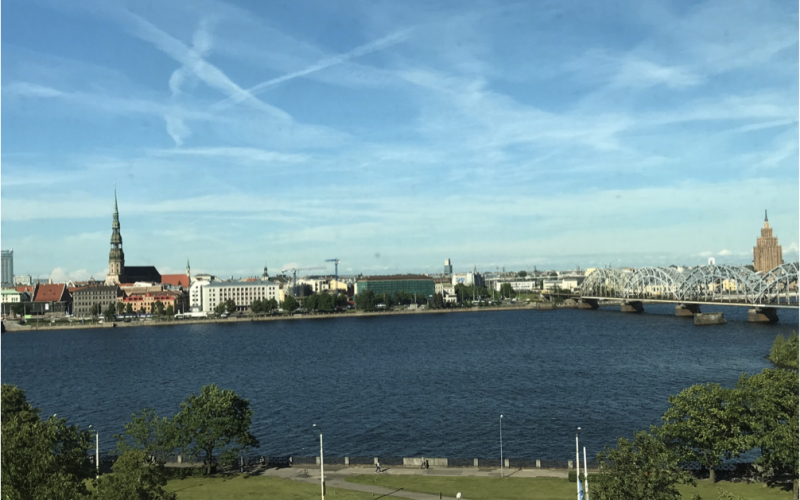
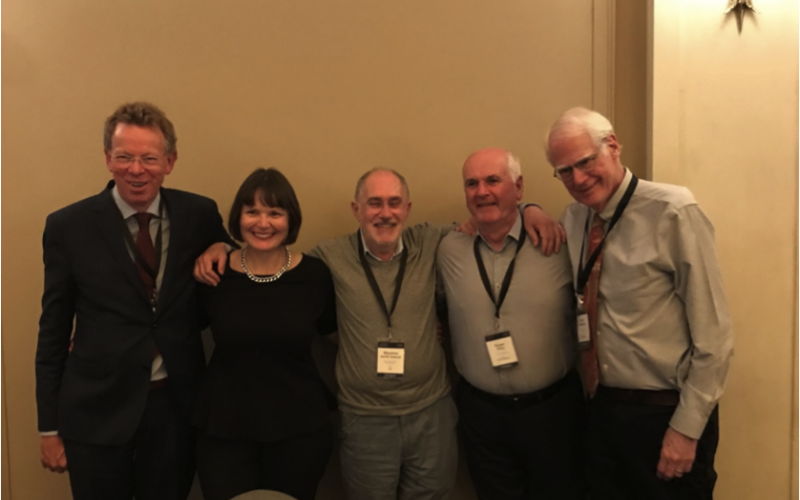
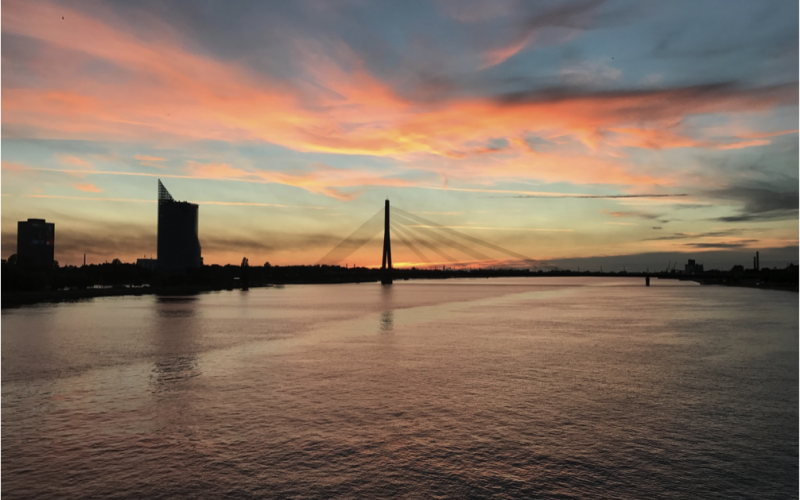
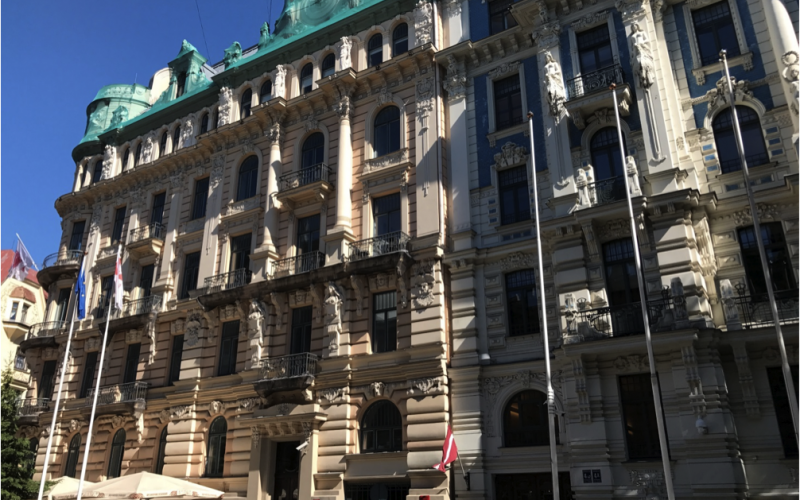
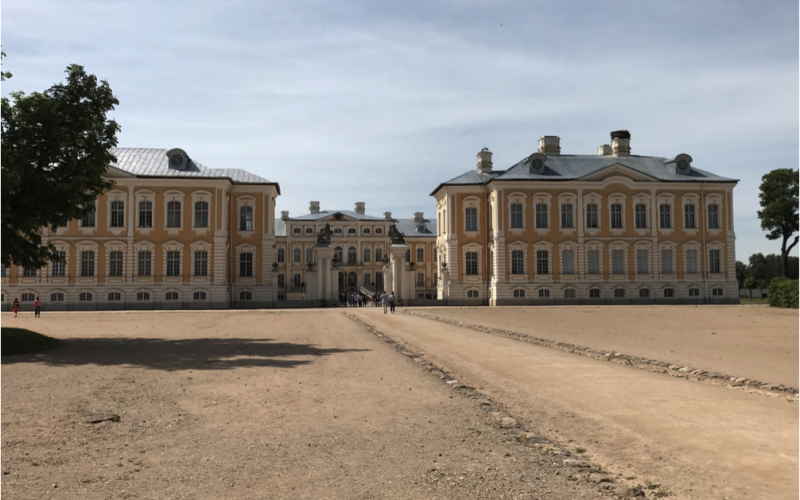
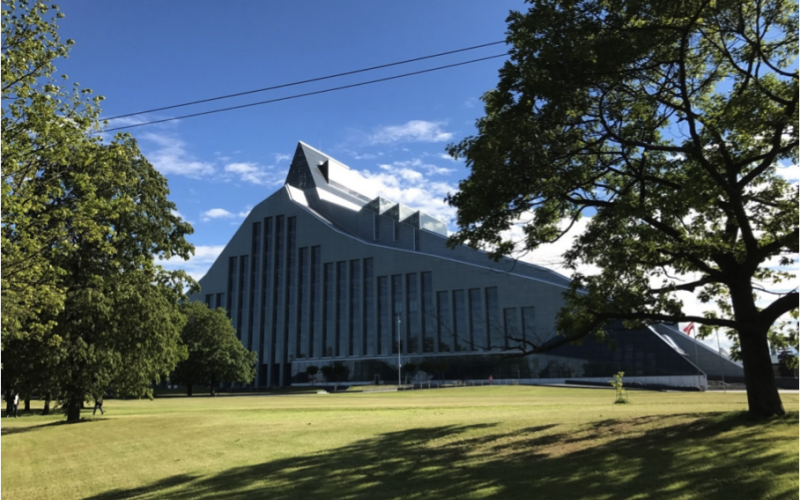
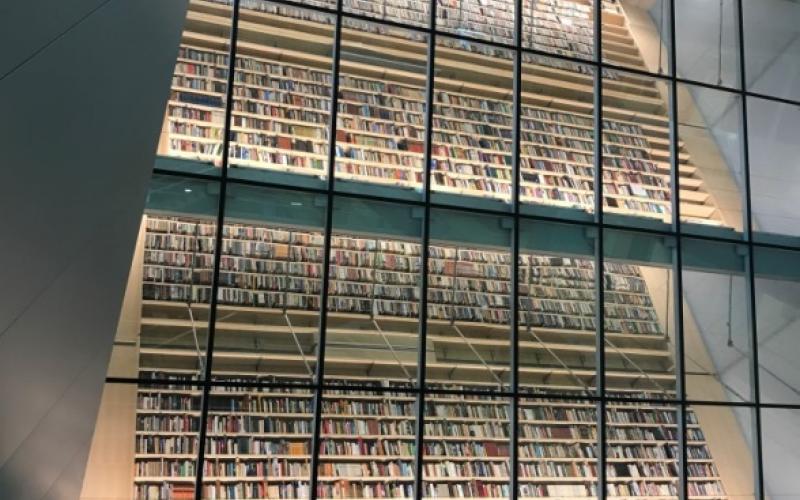
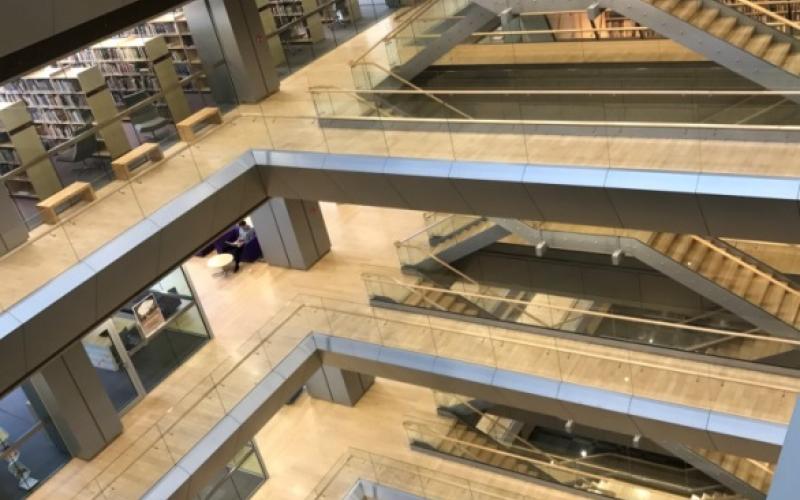
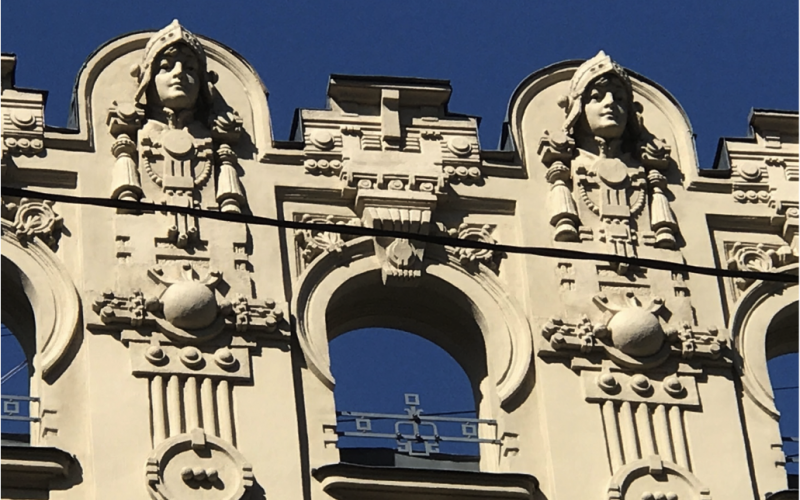
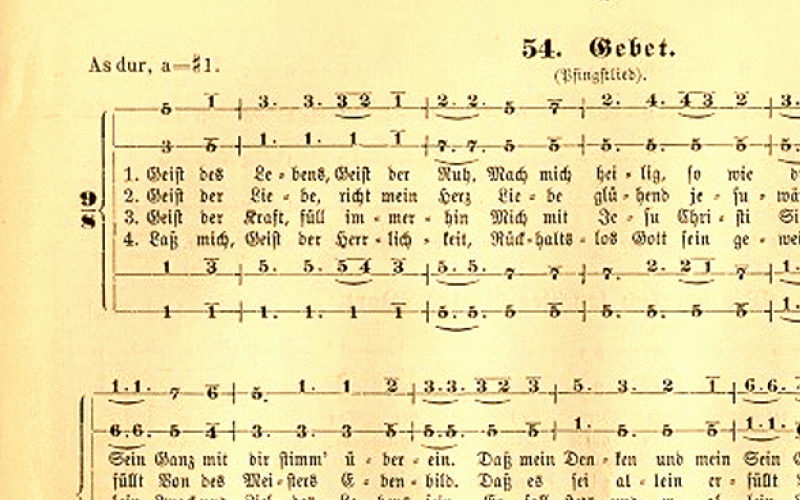
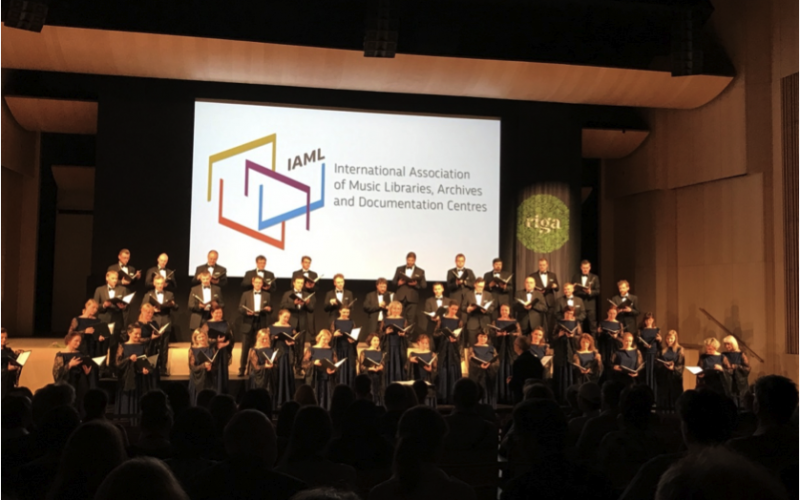
Comments
Tusind tak!
thanks!